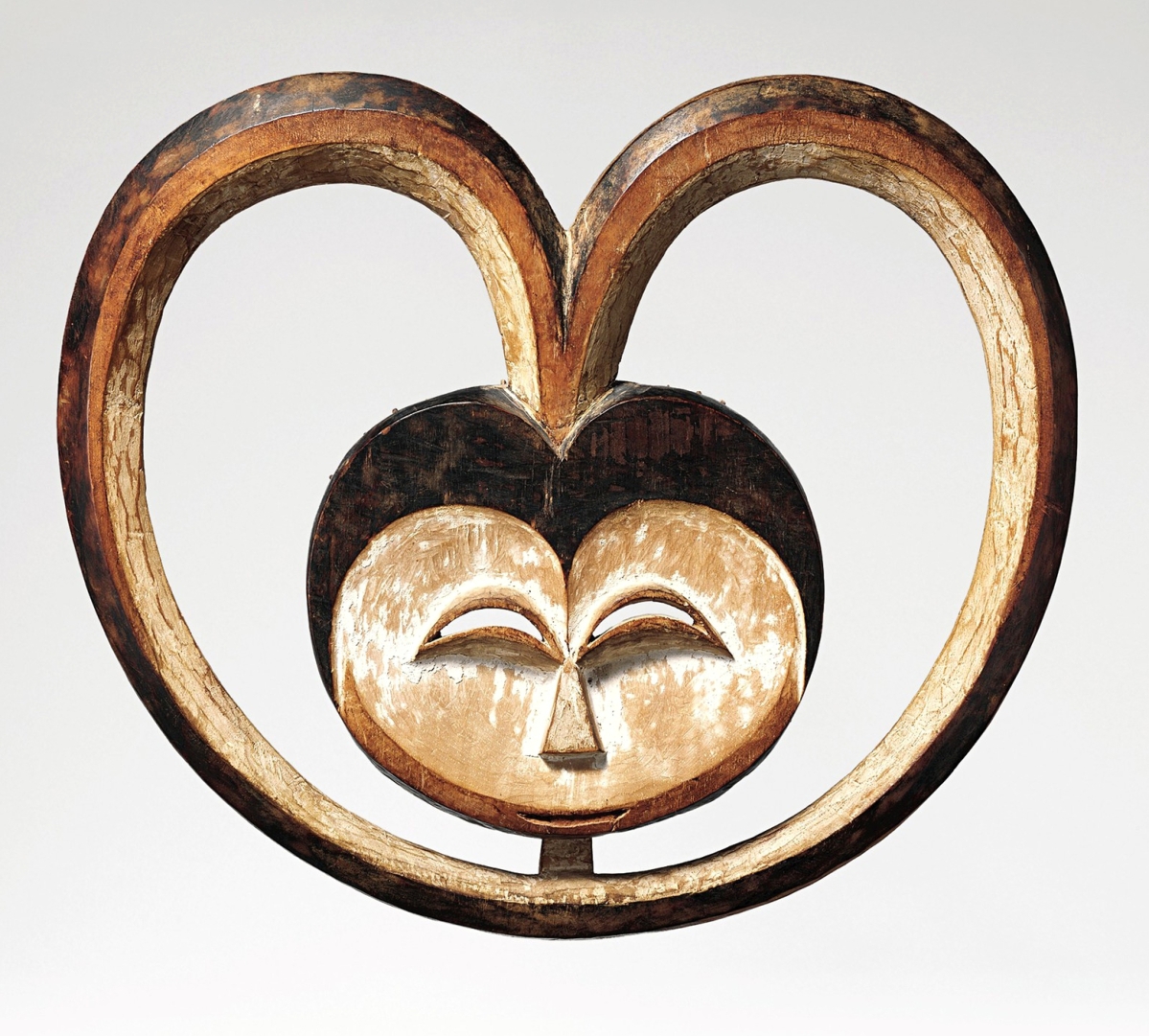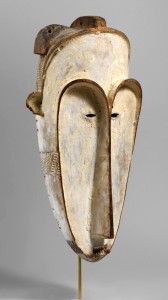
Beete mask: Ram (Bata), early-mid Nineteenth Century, Gabon, Kwele peoples, wood and pigments, 15 by 17-5/8 by 2-1/8 inches, private collection. —Peter Zeray photo, The Photograph Studio, The Metropolitan Museum of Art
LOS ANGELES, CALIF. — The Los Angeles County Museum of Art (LACMA) presents “The Inner Eye: Vision and Transcendence in African Arts,” on view through July 9. The exhibition features more than 100 works of sculpture and textiles. Through a series of themes, it conveys multiple notions of visuality and celebrates artists and performers as agents of insight and transformation.
“The Inner Eye” showcases works from diverse cultures in west, central and east Africa, and made from a range of media including wood, ivory, terracotta, metalwork and raffia palm fiber. The works, dating from the Thirteenth to Nineteenth Centuries, include figures, masks, initiation objects, royal emblems and reliquary guardians that guided people to spirit realms, the highest levels of esoteric wisdom, and the afterlife.

Ngi mask, 1850, Gabon, Fang peoples, wood, kaolin and fiber, 24½ by 11-5/8 by 8 inches, private collection. —Joe Coscia photo, The Photograph Studio, The Metropolitan Museum of Art
African perspectives are vital to understanding aesthetic principles of visuality informing particular works of art. Among Yoruba peoples of Nigeria, for example, an artist with enhanced perceptual capabilities is said to possess ojú inú, or “the inner eye.” The inner eye sees not what is in plain sight, nor what is apparent to the ordinary human eye, but rather, that which is interior and inherent. Thus, to possess an inner eye is to possess insight as expressed in a variety of ways to enhance perception, increase capacity and enable transformation. While the inner eye as ojú inú is a notion specific to Yoruba culture, the concept of insight resonates across many African aesthetic traditions, which are further explored in the exhibition.
“The Inner Eye” is curated by Dr Mary (Polly) Nooter Roberts, consulting curator for African art at LACMA and professor of world arts and cultures at UCLA, and underscores LACMA’s commitment to presenting and educating audiences about the arts of Africa. The exhibition also provides an opportunity to display several significant LACMA acquisitions made in recent years, such as a Bamana Gwan mother and child figure (acquired in 2014) and a selection of Kuba raffia pile embroidered cloths (acquired in 2009) — all from LACMA’s textile collection — offering a frieze of design innovation representing profoundly meaningful patterns of perception.
“The exhibition explores how objects have enabled owners, users and performers to transcend ordinary existence and bridge visible and invisible worlds,” says Michael Govan, LACMA CEO and Wallis Annenberg director. “We are excited for viewers to consider how artists enable us to see further, both literally and metaphorically.”
The exhibition opens with an introductory section that features a group of masks with different approaches to the gaze, from inward-directed eyes of spiritual reverence to projecting eyes of power and protection to multiple eyes for heightened vigilance and awareness. The section also offers two examples of cultural concepts of vision — the Yoruba inner eye (ojúinú) and a Sufi concept called batin, which refers to “the hidden side” of every visible reality.
Eight sections follow that are organized according to themes, each of which addresses an aspect of vision that enables transitions from one life stage to the next, and from one state of being to another.
Highlights include Chiwara headdresses, sculptures capturing the mother and child relationship as the most essential relationship, Kuba textiles and southeastern Congo sculptural works evoking interaction with the spirit world.
The Los Angeles County Museum of Art in Hancock Park is at 5905 Wilshire Boulevard. For additional information, 323-857-6000 or www.lacma.org.













